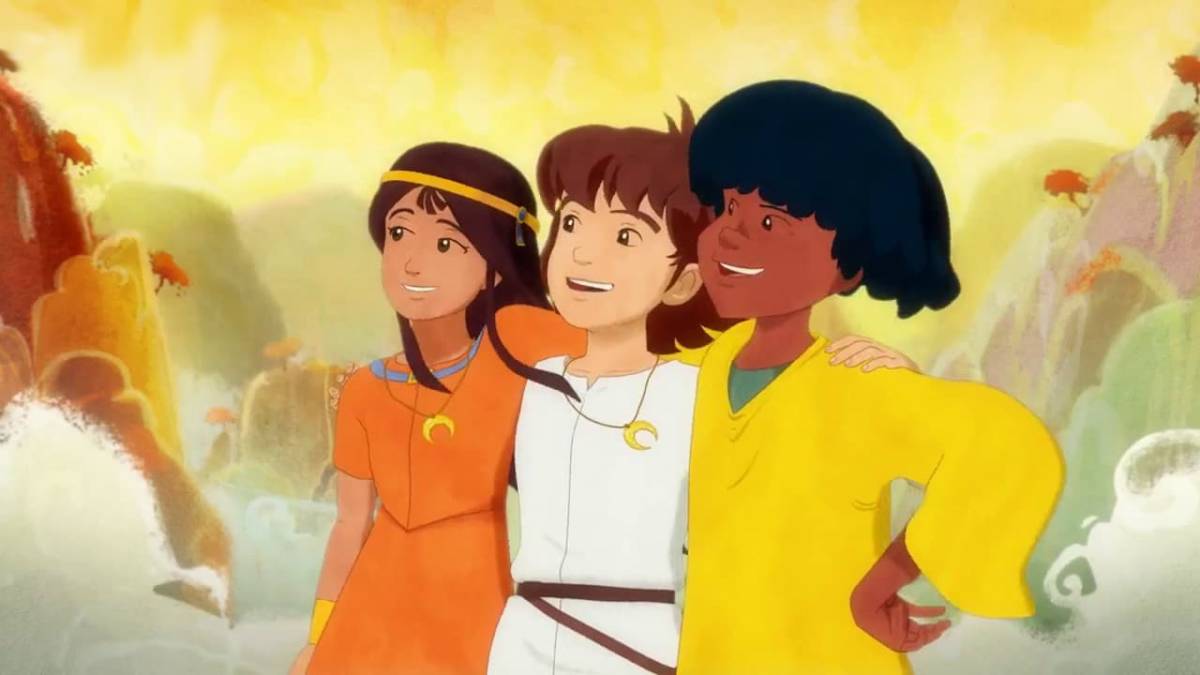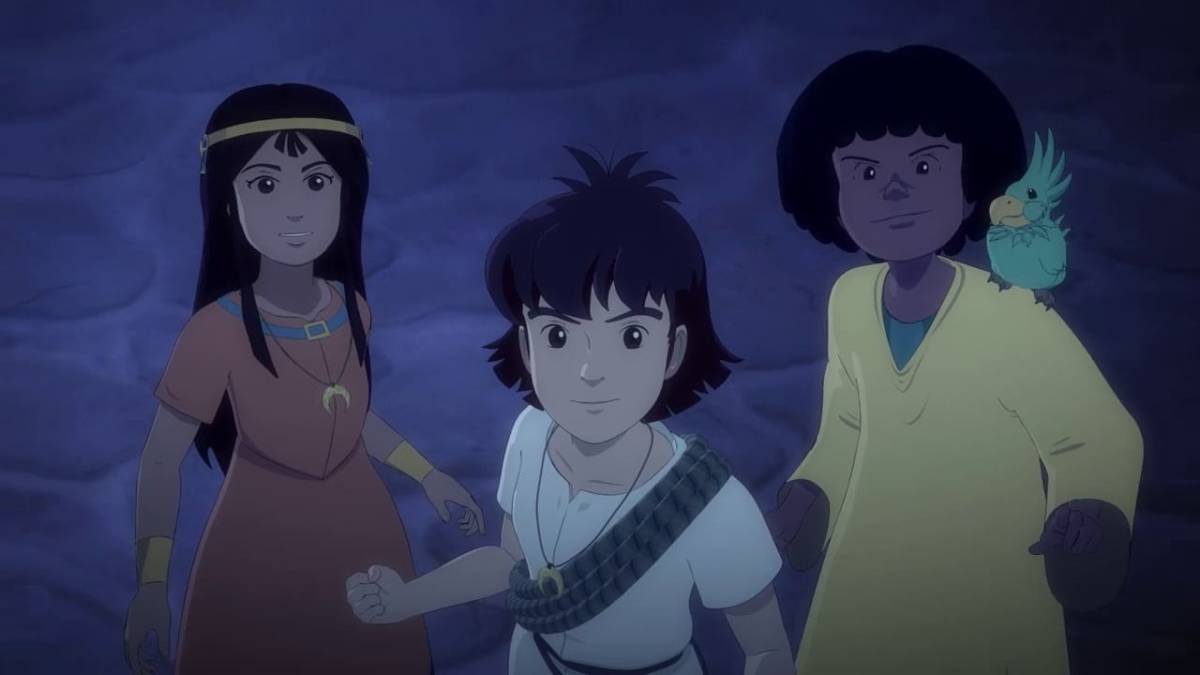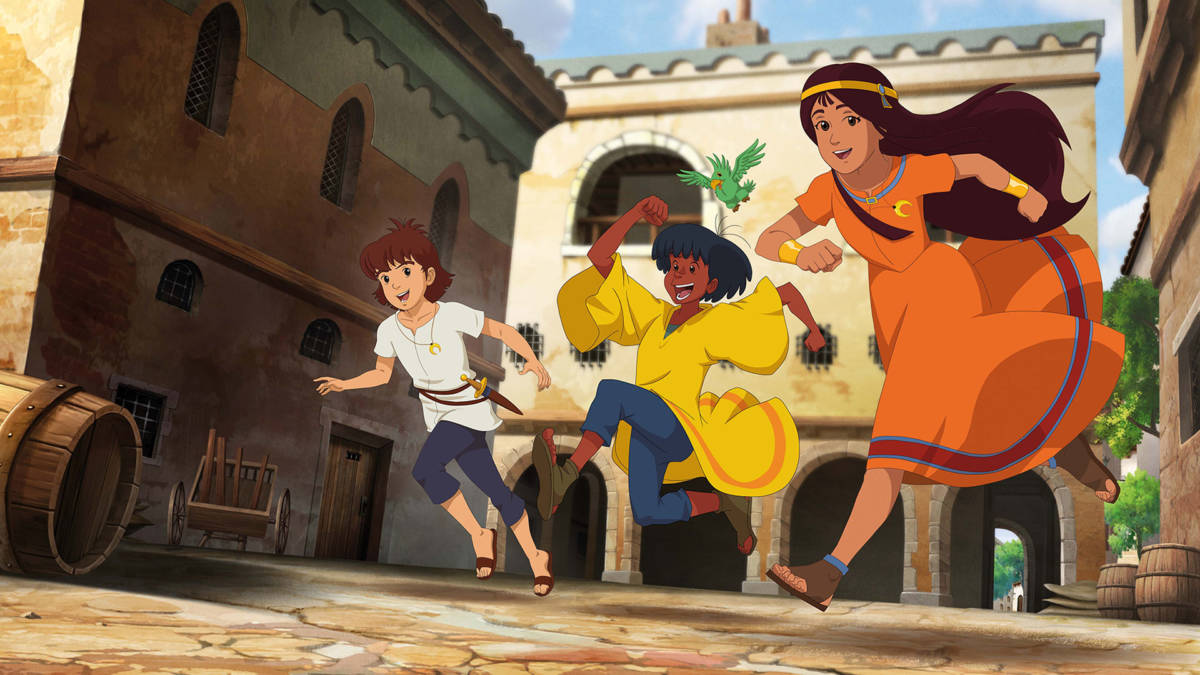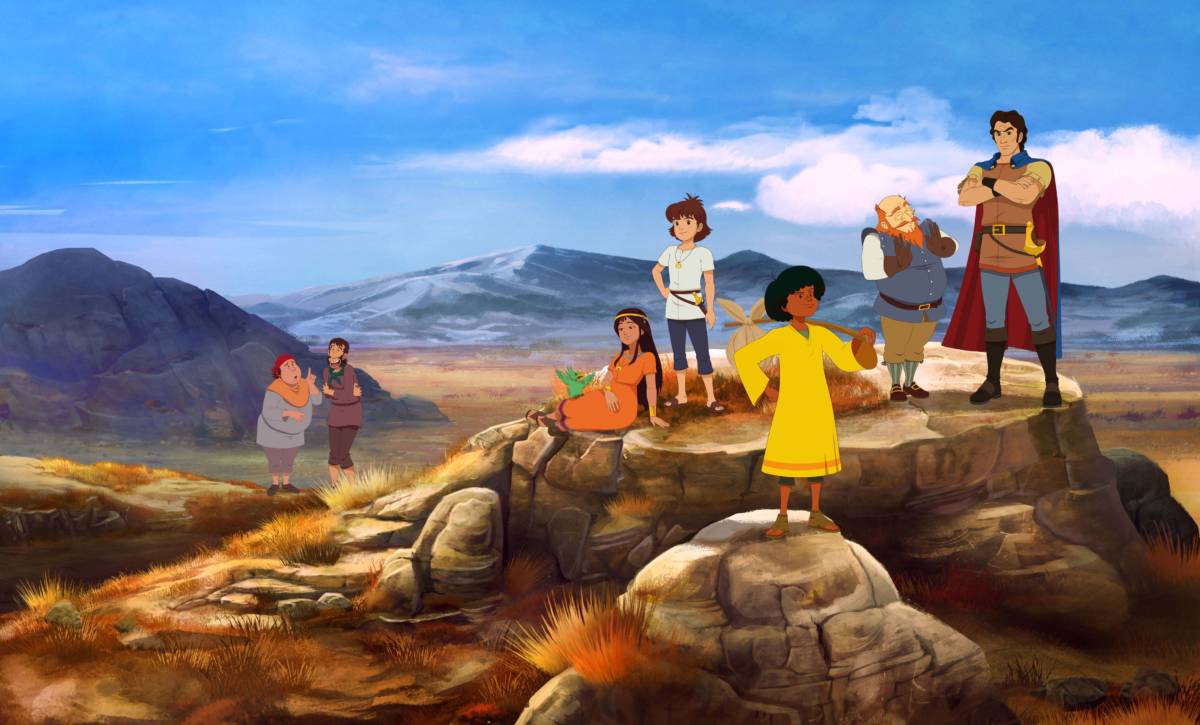When adult life gets overwhelming for us, we often think about simpler and happier times, sometimes even reflecting as far back as childhood. For me, childhood consisted of building Lego, playing with what friends I had, video games and watching cartoons. And do you know what one of my favourite cartoon series of all time was? The Mysterious Cities of Gold.
The Mysterious Cities of Gold was a little Japanese-French animated series that came out in the summer of 1982. Set in the year 1532, the cartoon followed the tale of three kids – Esteban, Zia, and Tao. Accompanied by swashbuckling Mendoza and comical sailors Sancho and Pedro, they embark on their quest to find the mysterious cities of gold, hidden cities containing vast amounts of wealth and knowledge. My grandmother owned it on VHS and I grew up loving the show – each episode was an exciting new adventure to look forward to and Mendoza was my first experience with how cool capes looked. Even now, I watch it on occasion as a guilty pleasure.
So, when I heard there was a second season of it that would be based around exploring medieval China instead of conquistadors arriving in the new world, I was surprised, excited and decided to take a look.

What did I think of the second season? Well, despite it being popular enough to get renewed for a second and third season, I fall into the unpopular side of the argument: I didn’t enjoy it and I didn’t have to go far before I found problems with it when comparing it to the original and my enjoyment of it, which is what I’m going to go into now.
The first issue I found came from the time that had passed between two seasons: while the first one came out in the eighties, the second season came out in 2012 – a whole thirty years apart! In this time, some of the original fans of the series would have lost interest along with age and new young fans jump right into the middle of an ongoing narrative, which could lead to confusion. Not too mention, the original voice actors – some of whom were children at the time – will have grown out of their roles, and this calls for a new cast. While this is ultimately down to the creators, some seasoned fans which may be put off by this. Watching both versions in French, the children actually sound more childish in the sequel.
The second aspect is the huge change in the animation style. The original was hand-drawn with a 2D looking format and while I get that an upgrade is needed after three decades have passed, the second season just looks a bit…wrong. In the first season, the colour palette was muted and though the animation wasn’t clean, it still looked pretty decent for the time it came out and had a certain style, a charm to it.

Thirty years later, the flat characters have been given an extra dimension, the colour palette has been seriously brightened but the new CGI animation looks like a first-year animation student’s failing project – cheap and rushed. The 3D models look bizarre, and while the first season had a consistent flow to it, the second season doesn’t. One minute, the characters’ movements are smooth as silk, then suddenly they’re rigid and robotic. If you’re going to animate something, stay consistent.
The third problem that annoyed me is actually a small but niggling collection of inconsistencies and changes in the plot – why does Esteban’s medallion change colour when it’s away from him? That never happened in the first season. Giving more characterisation and screen time to Sancho and Pedro who basically existed to lighten the mood? Weird decision. Getting Pichu the parrot to help Mendoza narrate the end of episode information sections…ok?
Also, the opening just feels average compared to the original: the original had an epic voice that read out the same narration at the start before going into the opening theme played with the title and a short introductory animation. In the second season, I mean…they did a cover of the original theme and…they have an Asian dragon because they’re in China…yay?
While we’re on the topic of music, outside of the theme, the second season has a more varied and eloquent soundtrack. The first season had only a few tracks which were repeatedly used throughout the original 39 episodes, and while those few original tracks are memorably nostalgic, it’s very clear that a lot more focus was put towards the music: each piece is unique with very few variants, and it pays off.

But the most important thing that is missing from the sequel personally is the way it feels. It could be that I didn’t grow up with the second season, but I always have something to come back to with the first season. I enjoyed it as a child and even still find things to enjoy with it to this day. However, while the first season arguably has something for everyone, the second season seems geared purely towards children. While in some cases that’s fine, the first season still had an underlying sense of maturity to it that must’ve gotten lost in the process of creating a follow up.
All in all, it’s a little heart-breaking to me. On the one hand, it is great that a new generation likes the series enough to gather interest for a sequel. But on the other hand, I honestly believe this isn’t the sequel we deserve – too much has changed and for me, a good portion of it’s charm has been lost. I went into watching the second season because the first was a niche but memorable piece of French-Japanese animation with something for everyone. Sadly, to me, the second season just feels like a forgettable children’s cartoon and it has killed my interest to go deeper. If you enjoy the new version or want to go into it, more power to you. However, I don’t think the new seasons of the Mysterious Cities of Gold hold a candle to the original.
There is an example of a franchise that – even it hasn’t had as a long of a time gap between iterations – that has regularly been subject to change and still managed to keep some of the original’s essence, and that is Scooby-Doo. Each episode follows the basic narrative formula of ‘whodunit’ that crime shows typically use, as well as keeping the relationships the characters had believable.
So, if you want to revive a piece of film or television from a by-gone time and you want something for reference, take a look at the 1982 and 2012 versions of the Mysterious Cities of Gold. The first: memorable. The second: forgettable.
Some of the coverage you find on Cultured Vultures contains affiliate links, which provide us with small commissions based on purchases made from visiting our site. We cover gaming news, movie reviews, wrestling and much more.



